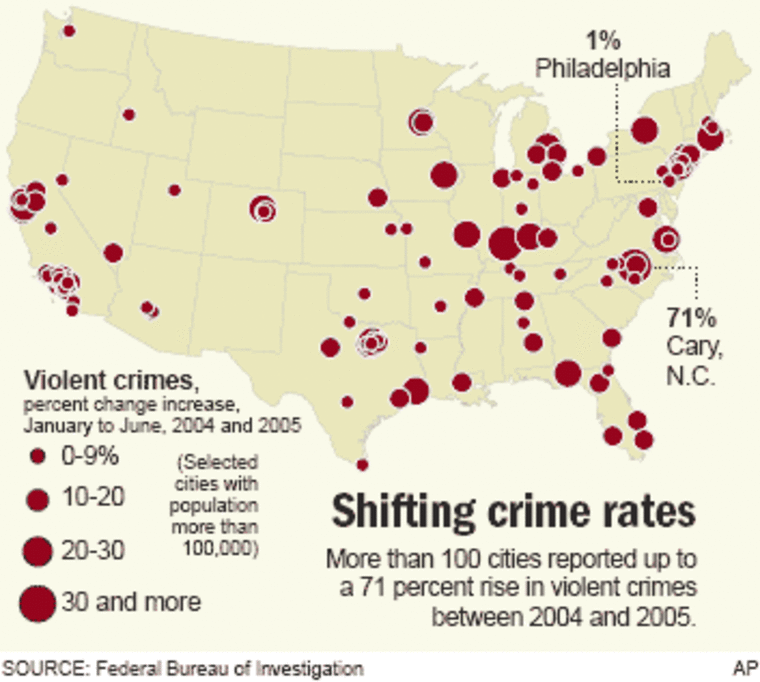A man who refused to give up his gold and diamond chain. Two teenagers hanging out on a front porch. Four family members in front of their house planning a cookout.
They were among 20 people shot, three fatally, in Connecticut’s capital since May 24 in a surge of seemingly senseless violence that has clergy and state lawmakers calling for a cease-fire and state troopers preparing to walk the beat.
Hartford and some other cities around the country are seeing a disturbing rise in shootings — many of them prompted not by drugs or money, but by petty squabbles and perceived slights. Young people are drawing guns over respect, turf and relationships.
Much of the bloodshed is attributed to 12- to 16-year-olds “settling beefs, dirty looks and somebody looking at somebody else’s girlfriend,” said Albert DiChiara, director of the University of Hartford’s criminal justice program.
“I’m anticipating a very, very bad summer,” he said.
Helplessness leads to drastic measures
Summer violence is not unusual in Hartford, a city of 125,000 that is a pocket of poverty in the nation’s second-wealthiest state. But residents say this year is different because so many people have been shot in such a short time.
From Jan. 1 to May 27, the most recent figures available, police reported 83 shootings, up 25 percent from the same period last year.
Those killed include Kerry Foster Jr., 15, described as a good kid with perfect school attendance who tried to stay away from the turf wars roiling his neighborhood. He and a 14-year-old friend were hit by shots from a passing car as they stood on Foster’s front porch.
“I’m fretting these numbers because one of these days, it could be coming to your door,” said Sam Saylor, a father of two teenagers. “I’m feeling helpless, and when men feel helpless, they go to drastic measures.”
DiChiara, who is part of a federally-funded project that works to keep the peace in the two Hartford neighborhoods where most of the shootings have occurred, said this year’s violence is the worst since he arrived in the city 16 years ago.
He said the gang wars of the early 1990s were easier to deal with because they involved organized factions that could be reasoned with.
Police unsure how to respond
Across the country, cities have reported recent increases in violence after years of declining national crime rates.
In Little Rock, Ark., there have been 33 homicides so far this year, slightly ahead of the pace of 1993, when gang violence caused a sharp increase. Sgt. Terry Hastings said most of the killings this year were prompted by drugs or soured relationships.

“We can’t figure out why suddenly you’re talking and then you start shooting,” he said. “How, as a law enforcement agency, do you deal with that?”
Philadelphia’s homicide toll is running about even with last year’s count, when a total of 380 people were killed, the most since 1997. In San Francisco, the number of killings is running at a 10-year high. And in Jacksonville, Fla., there have been at least 64 homicides this year, compared with 36 this time last year.
In Hartford, where clergy and lawmakers have asked for a 60-day cease-fire, the plan is to create teams of adults to visit high schools and teen centers to talk with young people and their families. Teams of mental health workers will also be sent out into the community to talk about anger management and available mental health services.
“We’re here to listen to you. This is not the police coming,” said state Rep. Kenneth Green of Hartford. “We want to begin to engage you in how to solve this problem.”
‘I’m scared to death’
For the fourth summer in a row, uniformed state troopers and plainclothes officers will be dispatched to help city police patrol neighborhoods. Federal agents will also help out.
Despite the increased police presence, many parents are keeping their children inside.
Saylor said he is willing to submit to random traffic stops by police or other measures that could help stop the gunfire.
“I’m willing to give up some civil liberties if it means saving one kid’s life,” he said last week. “There’s a sense of a complete absence of law right now, and I’m not ashamed to say I’m scared to death.”
